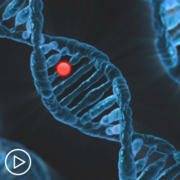Emerging AML Treatment Classes Showing Promise
Emerging AML Treatment Classes Showing Promise from Patient Empowerment Network on Vimeo.
What therapies are in development for acute myeloid leukemia (AML)? Dr. Ann-Kathrin Eisfeld discusses the latest research for AML treatment, including menin inhibitors and CAR T-cell therapy.
Dr. Ann-Kathrin Eisfeld is Director of the Clara D. Bloomfield Center for Leukemia Outcomes Research at The Ohio State University and a member of the Leukemia Research Program at the OSUCCC – James. Learn more about Dr. Eisfeld.
Related Resources:

|

|

|
Transcript:
Katherine Banwell:
Are there therapies in development that are showing promise for patients with AML?
Dr. Eisfeld:
There are so many of those. It’s hard to count. And this makes me very happy. There are exciting and again, targeted drugs.
Once drug class is called menin inhibitors, which we – which were just published that show high promise.
And again, very difficult to treat several groups of patients who harbor chromosome changes in MLL genes in here. So, that is a very exciting option.
And there’s very exciting treatments with respect to what you call antibodies – monoclonal antibodies that attacks the surface proteins that are being checked regularly. And one of those, for example, is called magrolimab. And that has even promise in these high-risk leukemias or adverse risk leukemias.
And then we are not there yet, but I’m sure we will be in the not too near future. There are also multiple trials that are looking at what we call CAR-T cells. But patients might have heard about for lymphomas or acute lymphoblastic leukemias. AML is a little more tricky with respect to those.
But we’ve seen pre-clinical studies that look really exciting. And I think it’s just going to be just a little more fine-tuning to make those easier, available, and more targeted for AML patients. And I’m very much looking forward to seeing those come more onto the market.
Katherine Banwell:
You mentioned the new menin inhibitors. Who are they right for?
Dr. Eisfeld:
We try to find out more, but definitely for patients that have been shown to be beneficial for patients who have chromosomal and rearrangements of the MLL gene or KMT2A gene. And there’s also good data on patients who have NPM1 mutations.
Even though we know – and these are mutations who harbor this kind of genetic change – have now a plethora, which is a great, of treatment options.
Because we know even conventional chemotherapy has been working decently well in them. We know that venetoclax also is supposed to work very well in them. But again, the data on the menin inhibitor with respect to NPM1 mutations is very exciting.








